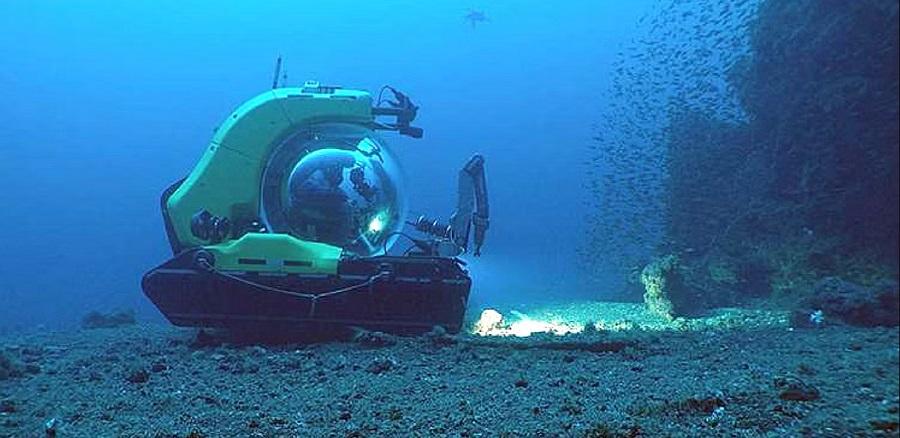Why the scheme is in the news?
Dr. Jitendra Singh, Union Minister of State (Independent Charge) for Science & Technology, Minister of State (Independent Charge) for Earth Sciences, and MoS for PMO, Personnel, Public Grievances, Pensions, Atomic Energy, and Space, stated that the “Blue Economy” would be a significant contributor to India’s overall economy in the future, and the Deep Ocean Mission, announced by Prime Minister Narendra Modi, would be its core component. The Minister chaired the first-ever high-level Steering Committee Meeting of the Deep Ocean Mission at Prithvi Bhawan in New Delhi. The Committee includes Union Ministers of State for Environment, External Affairs, Defence, and Finance, as well as the Vice Chairman of NITI Aayog.
Buy Prime Test Series for all Banking, SSC, Insurance & other exams
Deep Ocean Mission:
- The Samudrayaan project is a crucial part of the deep-sea ocean mission approved by the Ministry of Earth Sciences (MoES) in 2021.
- It is a groundbreaking initiative that aims to send manned submersibles into the deep sea for ocean exploration and rare mineral mining.
- The project focuses on exploring resources like polymetallic manganese nodules, gas hydrates, hydrothermal sulfides, and cobalt crusts, typically found at depths ranging from 1000 to 5500 meters.
- The National Institute of Ocean Technology (NIOT), under the MoES, is responsible for undertaking this project.
- In recognition of India’s efforts, the International Sea Bed Authority (ISA) has allocated a 75,000 sq km site in the Central Indian Ocean Basin for the exploration of polymetallic nodules from the seabed. This allocation is part of a 15-year contract.
- Preliminary studies estimate that the potential resource of polymetallic nodules in this area is around 380 million tonnes.
- Notably, the nodules contain significant amounts of manganese, nickel, copper, and cobalt.
- The Samudrayaan project encompasses six key components, each contributing to the overall mission’s objectives:
- Development of technologies for deep-sea mining and manned submersibles: The project aims to advance technological capabilities for mining operations and the use of manned submersibles in deep-sea exploration.
- Development of ocean climate change advisory services: The focus is on developing services that provide valuable insights into oceanic climate change and its impacts.
- Technological innovations for sustainable use of marine bio-resources: The project seeks to foster innovations that promote the sustainable utilization of marine biological resources.
- Deep ocean survey and exploration: Extensive surveys and explorations of the deep ocean will be conducted to enhance our understanding of this vast ecosystem.
- Energy production from the ocean and offshore-based desalination: The project aims to harness the ocean’s potential for energy production and explore desalination techniques in offshore environments.
- Advanced marine station for ocean biology: The establishment of an advanced marine station will facilitate research and study of oceanic biology.
Deep-sea vehicle Matsya:
- Matsya 6000 is the manned submersible vehicle designed for deep-sea exploration as part of the Samudrayaan project.
- It is capable of carrying three individuals and can reach depths of up to 6000 meters.
- This indigenous submersible has been developed through a collaboration between the Indian Space Research Organization (ISRO) and the National Institute of Ocean Technology (NIOT).
- The vehicle features a 2.1-meter diameter personnel sphere made of titanium alloy, ensuring durability and safety during underwater missions.
- It possesses an endurance capability of 12 hours and beyond, providing additional time for emergency situations.
- By 2022-23, Matsya 6000 will undergo a shallow water test phase at a depth of 500 meters, followed by qualification trials scheduled for 2024.
- Prior to its development, an initial usage test of the manned submersible was conducted to evaluate its operational capabilities. The test took place in the Bay of Bengal using the Ocean Research Vessel Sagar Nidhi.
- Matsya 6000 plays a crucial role in various subsea activities, including high-resolution bathymetry, biodiversity assessment, geoscientific observations, salvage operations, and engineering support.
- In a notable achievement, China’s Fendouzhe manned submersible successfully reached a depth of 11,000 meters in 2020, highlighting the advancements in deep-sea exploration.
Significance of Deep Ocean Mission:
- The Samudrayaan mission will stimulate further expansion in the exploration and utilization of ocean resources, particularly for clean energy and drinking water, leading to the growth of the blue economy.
- This mission is a comprehensive program involving multiple ministries and disciplines. It emphasizes the advancement of deep-sea technology, such as the development of manned submersibles, the procurement of a dedicated research vessel for ocean exploration, and the enhancement of capabilities in the field of Marine Biology.
- Several developed nations have already undertaken similar deep-sea missions. The success of Samudrayaan would position India as the first among developing countries to accomplish a mission of this nature, showcasing its commitment to deep-sea exploration.
You may also read this:
- PM CARES Fund: Overview, Composition, and Funding
- YUVA PRATIBHA – Culinary Talent Hunt promoting millets and Indian heritage
Find More News Related to Schemes & Committees



 Indian Olympic Medal Winners List Till N...
Indian Olympic Medal Winners List Till N...
 Who is the Inventor of the Gramophone?
Who is the Inventor of the Gramophone?
 HS Dhaliwal Appointed New DGP Of Andaman...
HS Dhaliwal Appointed New DGP Of Andaman...
